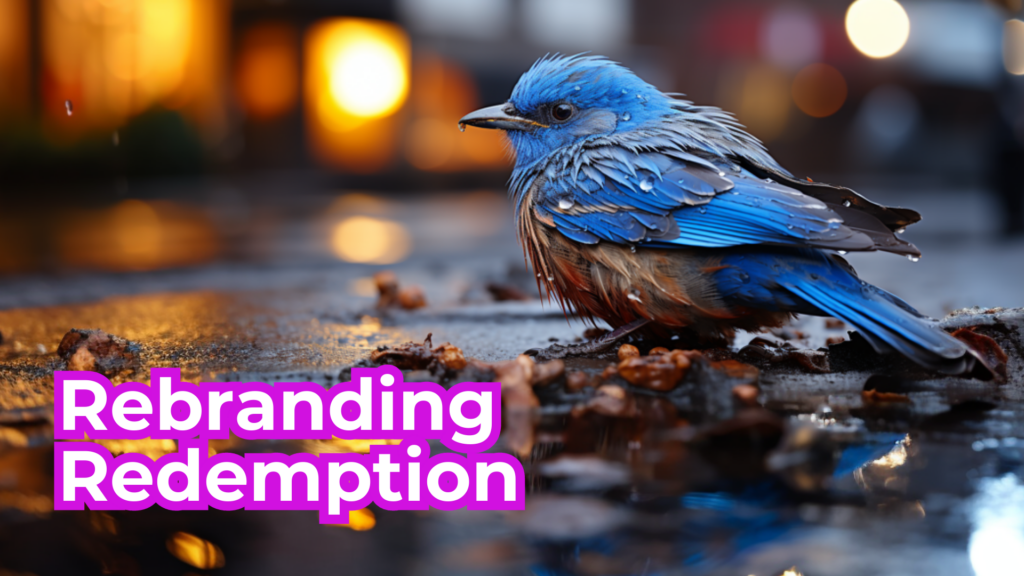“ChatGPT blew user adoption records out of the water earlier this year, acquiring 100 million users in just 2 months. Lensa, which allows users to generate images using Stable Diffusion API — another open-source AI model — briefly blew past YouTube and Instagram as the most downloaded iOS app last year.” – Raaj Rayat, CFA, a venture capitalist at AirTree.
Artificial intelligence (AI) is no longer in the realm of science fiction. The development of generative AI is going at quantum speed — not in years or months but in weeks. This disruptive tech has taken on a whole new meaning — from how we work, how companies are hiring, how businesses stay competitive, to how it transforms simple tasks like preparing dinner at home. Unless you have been living on a tropical island sipping piña coladas all day long ala ‘HBO: The White Lotus’ (not that we mind without the murders, of course), you would probably be familiar with ChatGPT, Bard, Stable Diffusion, RunwayML, ElevenLabs, Midjourney, and a plethora of generative AI tools by now. Just wait until Microsoft Copilot arrives on everyone’s computer!
Summary
In this article, we will delve into the fascinating world of generative AI and explore the misconception that it will replace human workers. Contrary to popular belief, generative AI technology is not a threat to human creativity and expertise; instead, it empowers those who possess the knowledge and understanding of its capabilities. We will discuss how generative AI can be harnessed as a powerful tool, enhancing, and augmenting human capabilities rather than supplanting them. Through real-life examples and user cases, we will showcase the symbiotic relationship between generative AI and human intelligence. So, let’s dive in and discover why, in the age of AI, those with generative AI knowledge are poised for success.
Introduction
Artificial intelligence has been making remarkable strides in recent years, with generative AI algorithms taking centre stage in the past few months. Generative AI refers to the technology that can create original content, such as images, videos, voices, and even text, based on patterns and data it has learned from. If you understand how it works, you can harness it as your ‘second brain’ — running brainstorming sessions, generating innovative concepts, assisting in strategy work, and creating out-of-the-box ideas you would never think of at a speed faster than you can complete a sentence. This ability has sparked concerns about the future of human creativity and expertise. However, the reality is far from the dystopian narrative that generative AI will replace human workers. In fact, those who possess the knowledge and understanding of generative AI are the ones who will thrive in the age of automation. We will explore the reasons behind this assertion and shed light on the symbiotic relationship between generative AI and human intelligence, as well as what you can do to stay ahead of this disruptive technology.
The Power of Generative AI as a Tool
1.1 Understanding Generative AI
Before diving into the impact of generative AI, let’s first gain a clear understanding of what it entails. Generative AI is a branch of artificial intelligence that focuses on creating content that is original and unique. It utilises deep learning algorithms and neural networks to generate new data based on patterns and information it has been trained on. Whether it’s generating realistic images, composing music, or writing coherent text, generative AI can mimic human-like creativity.
1.2 Enhancing Human Creativity
Rather than replacing human creativity, generative AI serves as a powerful tool to enhance and augment it. Take the field of design, for example. Designers can leverage generative AI to quickly generate multiple design iterations, saving time, money, and effort — think Adobe Firefly launched 12 hours ago. By exploring different possibilities and refining the generated results, designers can tap into their own creative instincts and make informed decisions. Generative AI becomes a collaborator, assisting humans in pushing the boundaries of their imagination.
1.3 Streamlining Tedious Tasks
Generative AI can also alleviate the burden of mundane and repetitive tasks, freeing up human talent to focus on more complex and creative endeavours. For instance, in content creation, generative AI can aid in brainstorming ideas, generating outlines, suggesting topics, and even writing initial drafts. This allows writers to invest their energy in shaping and polishing the content, infusing it with their unique style, voice, and knowledge of the topic. Generative AI acts as a supportive partner, automating routine tasks while humans contribute their expertise and personal touch.
The Symbiotic Relationship between Generative AI and Human Intelligence
2.1 The Creative Spark
While generative AI can generate impressive results, it lacks the intrinsic spark of human creativity. True creativity stems from our ability to connect seemingly unrelated concepts, see things from a bird’s eye view, draw inspiration from diverse sources, and think outside the box. Generative AI operates within the confines of its training data, limiting its capacity for genuine innovation. Therefore, human creativity remains irreplaceable, serving as the driving force behind breakthrough ideas and originality.
2.2 Emotional Intelligence and Context
One area where generative AI falls short is in emotional intelligence and understanding context. Human intelligence encompasses the ability to empathise, understand emotions, and perceive nuances that are crucial in various domains. Whether it’s writing a heartfelt piece, creating compelling marketing campaigns, or providing personalised customer experiences, the human touch is indispensable. Generative AI may produce content that is technically accurate (at times not so), but it often lacks the emotional depth, field experience, and contextual understanding that humans bring to the table.
2.3 Ethical and Moral Judgement
Generative AI operates based on the patterns and data it has learned from, without the ability to discern ethical considerations or make moral judgements. Humans, on the other hand, possess the moral compass and critical thinking necessary to navigate complex ethical dilemmas. Whether it’s deciding on the appropriateness of content, evaluating the impact of decisions on society, or addressing bias and discrimination, human intelligence is vital for upholding ethical standards and ensuring responsible use of technology.
2.4 The Power of Collaboration
When humans and generative AI work together, they create a powerful synergy. By leveraging the strengths of both, remarkable outcomes can be achieved at breakthrough speed. Collaborative efforts between humans and generative AI can lead to innovative solutions where the AI system generates suggestions and options that humans can refine and enhance. This collaboration fosters a continuous learning process where humans gain insights from the AI system and the AI system evolves based on human feedback.
The Importance of Generative AI Knowledge – What Can You Do to Stay Ahead
3.1 Acquiring Generative AI Skills
As the world becomes increasingly reliant on AI technology, a workforce possessing generative AI knowledge is becoming an asset. Individuals who invest in understanding and mastering generative AI algorithms, frameworks, and applications position themselves as invaluable resources in their respective fields. This knowledge enables professionals to harness the capabilities of generative AI, integrating it seamlessly into their workflows and achieving unprecedented levels of efficiency and innovation, in turn positioning the companies they work for at a higher competitive advantage than those that lack the skills.
3.2 Staying Ahead in the Job Market
With automation and AI rapidly transforming industries, the job market is evolving as well. Hiring managers are changing their job descriptions to include generative AI know-how. Jobs that can be easily automated are at risk, but those that require a combination of human creativity, critical thinking, and generative AI skills are in high demand. Employers seek individuals who can leverage generative AI as a tool to drive innovation and solve complex problems. By equipping themselves with generative AI knowledge, individuals increase their employability and remain relevant in the ever-changing job market.
3.3 Pioneering New Frontiers
Generative AI is still a rapidly advancing field (think exponential quantum speed) with immense untapped potential. Those with generative AI knowledge can be pioneers, shaping the future of various industries. By staying informed about the latest advancements, actively participating in research and development, and exploring novel applications of generative AI, individuals can position themselves as thought leaders and influencers in their domains. It has already begun.
Conclusion
In conclusion, generative AI is not a threat to human workers; it is a tool that empowers and amplifies human capabilities. The symbiotic relationship between generative AI and human intelligence is a powerful combination that drives innovation and creativity. While generative AI can streamline mundane tasks and offer suggestions, it lacks the intrinsic qualities that make us uniquely human—creativity, emotional intelligence, ethical judgement, and the power of collaboration. Those who possess generative AI knowledge and can leverage it effectively in their work are poised for success in the age of automation. By embracing generative AI as a partner rather than a competitor, we can unlock new possibilities and shape a future where humans and AI coexist harmoniously.
So, the question is not whether you will be replaced by AI. It’s about when you will re-skill and up-skill. The time is now.
Top 5 FAQs (Frequently Asked Questions)
Q1: Can generative AI completely replace human creativity?
A1: No, generative AI cannot replicate the depth and ingenuity of human creativity. It can assist and enhance human creativity, but it cannot fully replace it.
Q2: How can individuals acquire generative AI knowledge for their daily work?
A2: Individuals can start by learning the fundamentals of machine learning and deep learning algorithms. There are online courses, tutorials, and resources available that provide hands-on experience with generative AI frameworks and tools. YouTube videos are another valuable resource you can tap into, especially on how you can use them to support your work and business.
Q3: Can generative AI be applied to industries beyond creative fields?
A3: Absolutely. Generative AI has applications in various industries, including healthcare, finance, retail, manufacturing, and more. It can assist in data auditing, predictive modelling, business case analysis, and generating solutions to complex problems.
Q4: Will generative AI lead to job losses?
A4: Yes, only if you don’t pivot. While some jobs may be automated, the rise of generative AI also creates new job opportunities. Individuals with generative AI knowledge can contribute to developing and optimising AI systems, ensuring their ethical use, and leveraging AI to drive innovation and productivity in different sectors.
Q5: Is generative AI knowledge only relevant for technical professionals?
A5: No, generative AI knowledge is not limited to technical professionals alone. While technical roles like data scientists and AI engineers require in-depth AI expertise, generative AI knowledge is increasingly valuable across various domains. Professionals in fields such as marketing, finance, HR, business planning, and product development are tremendously benefiting from understanding generative AI concepts and applications to make informed decisions, drive innovation, productivity, and profitability.








